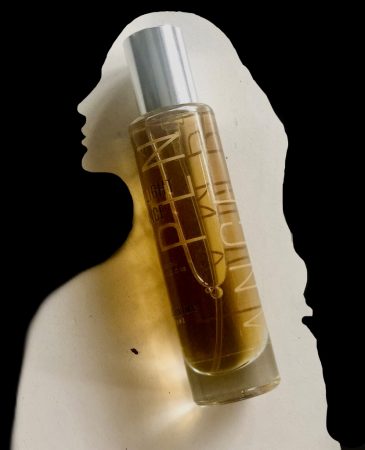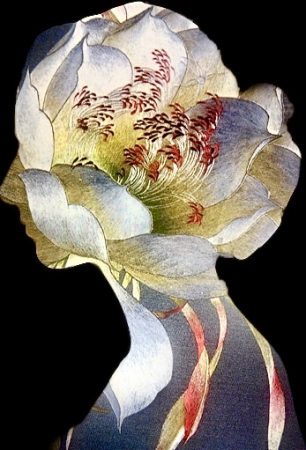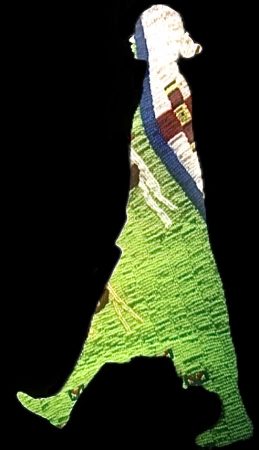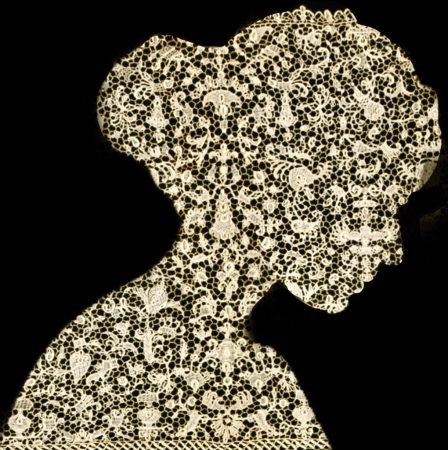
Burning with the midnight oil. Photo, creative direction, and digital art by @a_nose_knows for Chatillon Lux Lamplight Penance.
Science made it trivial to think of unrelated concepts as relatable and fixed: horse power; negative numbers; light years. It’s now mainstream and accessible, translatable and applicable, even cool, magnanimous as it is and quick to dumb down realities and use casual talk to make it easy, friendly and “[…] for dummies”.
But high and might as they may be, scientists are still struggling to define randomly fluctuant values. Little do they know that beauty, for example—this unattainable concept, this painstakingly fleeting scope, this maximally subjective construct—has always been measurable, and measured, in labor- just like love.
The beauty/labor diome is funny that way: the more pristine the result, the more sweated over; the more detailed, the more grand the work; the more blinding the effect, the darker the hours of its making, and the more unknown the maker–for it is never the laborer who takes it in, nor the bearer who lays their eye upon it in admiration. It’s not the birther who sees the glory of the birthed; it’s not a first lover who reaps whatever love they taught; the crafter won’t own whatever they created.
Beauty–just like love–leaves its maker behind.

Chinese silk embroidery. Creative direction, editing, and digital art by @a_nose_knows for Chatillon Lux Lamplight Penance.
THREADING
Su xiu embroidery (苏绣) is the most revered of the four main styles of Chinese silk stitching, and—particularly for a strangers’ eyes—an inhuman work of wonder. Celebrated for its subtle and refined needlework, the use of the finest silk threads, perfectly balanced compositions, extremely dense stitching, and a photo-like, smooth finish, Su was, for the longest time, reserved for the high officials- the ministers; the concubines; the royal family. To this day, it remains the only style that allows for an artist to simultaneously embroider two different patterns, using two different needles to create a double-sided, double-design embroidery. The emperor’s robe took an average of 3 years to be embroidered by a team of 5-6 workers, using more than 40 needles each, and over 1000 different threading techniques.
On May 20, 2006, the Su Xiu Chinese embroidery craft was designated an intangible cultural heritage, and registered as a Unesco item of universal patrimony.

Lakota beadwork by makaearthterradesigns. Creative direction, editing, and digital art by @a_nose_knows for Chatillon Lux Lamplight Penance.
BEADING
Many centuries before Europeans landed on the shores of the new world, Native American crafts combined design and functionality in bead-based arts applied, incredibly, to all aspects of living. Clothing, everyday objects, tents, furniture, children’s things, horse and household equipment–all, in a very unique approach to impermanence, were embellished to a broader extent than in any other major cultural family. In the beginning—and long before metal tools were common—beads were patiently made of natural items: dyed porcupine quills, feathers, shells, and bones were cut and stitched painstakingly onto moccasins and robes; later on, semi-precious stones like turquoise and jasper became popular; starting with the 1830s, craft artists switched to glass beads, and the rest is (art) history.
There are 7 major beading techniques continually used by artists from all tribal groups and walks of life. The monumental, large-scale “lazy stitch” works in short lengths of beads and affixes them to the fabric only at the ends; different tribes use different numbers of beads (the Sioux use 8-9; the Lakota, around 6. To fill the whole yoke of a Lakota dress or saddle, a craftswoman would work continuously for months at a time).

Lace from the Metropolitan archive. Creative direction, editing, and digital art by @a_nose_knows for Chatillon Lux Lamplight Penance.
LACE
Lace comes from Latin, where lacques meant “noose”; the term covers a great variety of ornamental openwork fabric formed by looping, plaiting or knotting thread made from cotton, linen, or—if you’re a really, really hard-core Victorian—human hair. Developed in Italy and used through the 1400s as a way to adorn altars and religious artifacts, lace was already a luxury item by which to measure one’s might; but since the Middle Ages were relatively boring and limited in personal scope, it quickly became a marker for class; from there it became fashion, and the whole world frilled.
By the 1500s, lace making was being taught in schools in the Belgian provinces, with Spanish, Neerlandese, German, French and English crafts following closely behind.
Catherine de Medici (1519-1589) took her rich point lace collars to France, and, as she was undeniably one of history’s biggest influencers, their popularity was immediate.
The epitome of lacing finally happened when bobbin lace and needlepoint lace came about- intricate delicacies were built out of damp materials by nimble (often childrens’) fingers, over months of toiling and spinning for the adornment and delight of the mighty.
The bobbin lace technique can use up to 600 bobbins at a time. The Alençon needlepoint lace technique takes 4 years of apprenticeship and 4 more of masterisation to accomplish full maker status; one square centimeter of lace can take about 7h to complete, and a handkerchief- about 1500h of work; the result is so delicate that back in the day it was traditionally ironed with a lobster claw.

Shawn Maher of Chatillon Lux courtesu of Shawn
Chatillon Lux Lamplight Penance took me by surprise in the same humbling way I tend to stare at minutia- it is usually not the beauty that sets me in awe, but the making of, the toiling to get there, the laboring, unknown, at wee hours.
The opening is burst-like but contained and hypnotizing, like the FLOOF! sound made when gas catches fire; perilous but friendly, comforting, familiar, routine. I smell kerosene and sweet soap, berries, and the muddy traces of a first snow. As the first vapors dissipate and the idea settles, flame becomes smoke and a bodily presence takes shape; the smell is corporal and palpable, slightly sweet, slightly salty, warm and enveloping–it, literally, works. The calibration is fine and the notes are hard to describe- the phase is docile but focused, and my nose is certain to smell something new to me: a meltdown that’s not tar, a smoke that is not ash, a sweetness that is not vanillic, a leather that’s not hide.
The drydown is conclusive like a last stroke, but calculated and satisfying: liquor and woods, fuzzy fruit and slight sweat, and an overall impressum of skin is putting the mind at rest. Finally done with work, it is now beauty.
Perceived notes after blind testing: smoke, berries, gin, apricots, rum, tar (ish), herbal teas, balsams, saliva (narcissus?), cold rocks, sweet hay, shells, cedar and oak/acorns, salty animalics (ambergris?), tobacco leaves.
Disclaimer: Lamplight Penance shortlisted by me, gifted by the company, and tested blind. Thank you so much.
– dana sandu, Editor

via Art and Olfaction Awards
The CaFleureBon team congratulates Shawn Maher of Chatillon Lux for his nomination as a finalist of The 2020 Art and Olfaction Awards. His Weinstrasse is in the run for the best artisan perfume of the 2020 and you can read a more detailed review here. We also wish him a wonderful birthday which is April 28, 2020 when Crystal Moon will be released under his Maher Olfactive brand. dana did not read any backstory, other reviews nor read the notes on the site for Chatillon Lux Lamplight Penance-Michelyn Camen, Editor-in-Chief
Thanks to the generosity of Chatillon Lux, we have 30 ml of Lamplight Penance for one registered reader anywhere in the world (you must register on our site or your comment will not count). To be eligible, please tell us what you enjoyed or found interesting about dana’s review, if you’ve tried a Chatillon Lux perfume before, and where you live. Draw closes 4/30/2020
Please support our artisan perfumers! You can purchase samples or bottles of Shawn’s available fragrances here
This is our Privacy and Draw Rules Policy
Follow us on Instagram @cafleurebon @a_nose_knows @chatillonlux
We announce the winners only on our site and on our Facebook page, so like Çafleurebon and use our blog feed…or your dream prize will be just spilled perfume.
